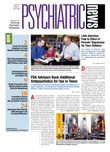The Medicare Trust Fund is expected to be exhausted in 2017—two years earlier than predicted last year, according to the 2009 annual report of the Medicare trustees.
According to the report, total Medicare outlays, less dedicated revenues, are projected to exceed 45 percent of outlays in Fiscal 2014. Since this is within the first seven fiscal years of the projection period, the trustees determined that a “Medicare funding warning” was triggered, as required by the Medicare Modernization Act.
Continuing a trend for the past several years, the report predicts a dire future for the program's Hospital Insurance (HI) fund. The Medicare program's Supplemental Medical Insurance (SMI) fund is solvent but also faces serious problems.
“The long-range financial projections for HI continue to show a substantial financial imbalance,” the report stated. “Tax income is expected to be less than expenditures in all future years, and trust fund assets, which began to decline in 2008, are expected to do so continuously. Without legislation to address these deficits, HI would increasingly rely on interest income and the redemption of fund assets, thereby adding to the draw on the federal budget.... By the end of the 75-year period, less than one-third of HI costs could be paid from HI tax revenues. Accordingly, bringing the HI program into long-range financial balance would require very substantial increases in revenues and/or reductions in expenditures.”
The financial outlook for SMI is fundamentally different from that for HI, due to the statutory differences in how these two components of Medicare are financed. Nonetheless, the report noted that rapid expenditure growth is a serious issue for SMI, as it is for HI. The SMI fund is particularly affected by the physician fee schedule. For a number of years now, the government's formula for establishing the fee schedule has called for steep cuts in physician payment, yet each year, in the face of intense lobbying by the AMA and other medical groups, Congress has stepped in to avert the pay cuts.
“[I]f Congress acts to prevent a scheduled 21.5 percent reduction in physician payment rates in 2010 and further reductions in 2011-2015, then actual Part B costs could exceed the current-law projections shown in this report by 18 percent to 21 percent in the short range and by up to 10 percent in the long range,” the report stated.
Health and Human Services Secretary Kathleen Sibelius called the report a wake-up call. The report “should trouble anyone who is concerned about the future of Medicare and health care in America. Just as families, communities, and businesses are struggling under the crushing burden of skyrocketing health care costs, so too are our Medicare Trust funds.... And it's yet another sign that we can't wait for real, comprehensive health reform.
“I know this alarm has been sounded before. Politicians have been worrying about the growth of Medicare spending for many years. The Obama administration isn't just worrying; we're doing something about it.... We are working with Congress on legislation that includes and goes beyond the cost-savings policies in the president's budget. The only way to slow Medicare spending is to slow overall health system spending through comprehensive and carefully crafted legislation.”
“2009 Annual Report of the Boards of Trustees of the Federal Hospital Insurance and Federal Supplementary Medical Insurance Trust Funds” is posted at<www.cms.hhs.gov/ReportsTrustFunds/downloads/tr2009.pdf>.▪
